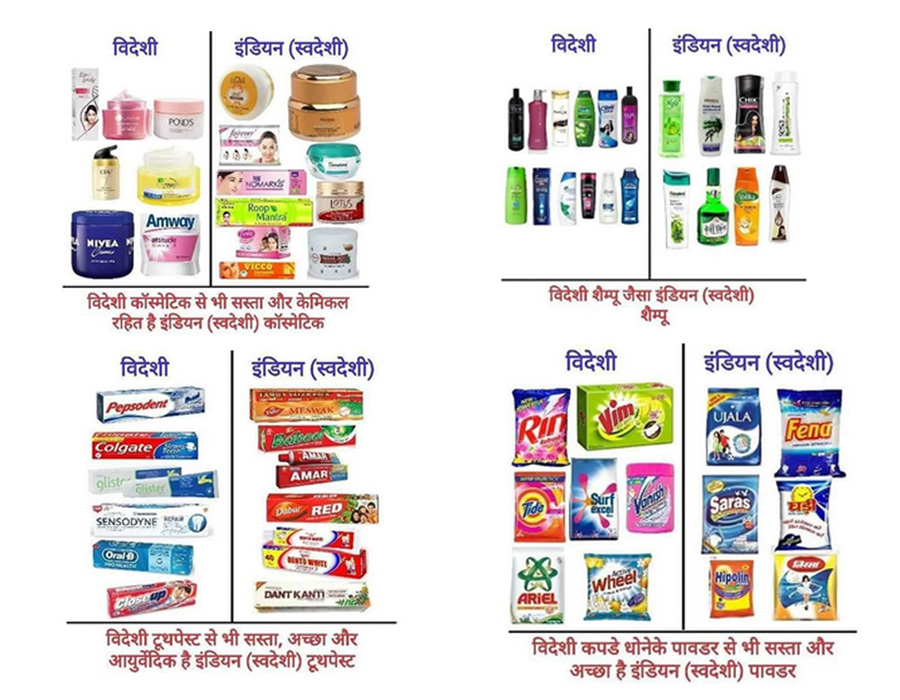NEW DELHI: As the country transitioned into the fourth phase of Covid2019 lockdown, prime minister Narendra Modi in his effervescently charming manner stood on the national podium asking citizens to go “Vocal for Local” for building an “Aatmnirbhar Bharat” (self-reliant India), on 12 May. He also announced a stimulus package of Rs 20 lakh crores for the economy to realise this aspiration.
Following his address, union minister of finance Nirmala Sitharaman spelt out a list of reforms and reliefs, utilising the huge stimulus package, including a change in the definition of MSMEs, the introduction of collateral-free loans for the sector, injection of liquidity in DISCOMs, and liquidity support for farmers.
As expected, social media was abuzz with posts supporting the call for using local products, some also sharing a detailed list of global vs ‘swadeshi’ FMCG products.

Praising this move of the government, chartered accountant and AnBac Advisors founder Anuj Bali told Indiantelevision.com, “This is a great initiative taken by the Indian government as it is going to help us in building a stronger economy and also positively balance our imports with exports.”
He added that the way the prime minister has approached the public with the idea is also a great stimulator. “He has presented it like he had come up with the Swacch Bharat Abhiyan, motivating people to start living the movement.”
However, while the idea of going local and creating a self-reliant India has appealed greatly to the masses and industrialists, there are some structural issues, which the governments will have to address.
DigitalKites SVP Amil Lall says, “Going local helps any economy to grow but first we need to check if we are ready for it. For example, if we talk of mobile manufacturers or automobile manufacturers in India, we will still have to import the spare parts, as such facilities are far from realisation here. Brands like Lava, while being Indian, have their research and development departments based in China.”
Bali shared similar views as he said, “Yes, the government needs to intervene at core levels, apart from introducing financial stimulus. There are a lot of bureaucratic issues as well when it comes to acquiring land for businesses and setting up factories, which needs to be addressed.
He added, “We also need some intervention in the education sector to develop research appetite in our students.”
Economic experts noted that it is not very feasible to achieve this target of going completely local, given the current status of India.
Retired professor Satish K Jain, who has served institutions like JNU, shared, “It is a good idea but I think we are not really prepared it (using only local brands). You need to have proper infrastructure, rules and regulations should be easy, bureaucracy should be efficient, and there should be enough local expertise in place, all of which is lacking right now. Our infrastructure also is not developed to achieve this.”
TERI School of Advanced Studies vice-chancellor (Actg) Manipadma Datta said, “India is facing a demand-side crisis right now, but with this, we are making it look like a supply-side challenge. Even before the lockdown, we saw how automobile manufacturers were struggling as there was no demand. In addition to this, our manufacturing index and agricultural index has been falling rapidly.”
He added that another problem facing the Indian business sector right now is the unorganised labour class, which comprises 24 per cent of the workforce. “They have had a very traumatic experience because of Covid2019 and it will take time for them to get over it.”
Both Datta and Bali noted that the economy will grow only when all people have money in their hands and the government needs to address the liquidity issues for the consumers as well.
All of them agreed that a rework on labour laws, already in process, simplification of bureaucratic processes, and investment in research & development facilities are needed to achieve this goal, and that seems like an extension of ‘Make In India’ mission.
However, Datta left us with a question around how feasible and sensible is it to make a local economy in a highly globalised world. “Look at Singapore. That is a very small nation, doesn’t have enough land to put factories and relies on international facilities. Yet, it is one of the most advanced regions, not just in Asia, but globally. So, why do we really need a local approach to be self-reliant?”






